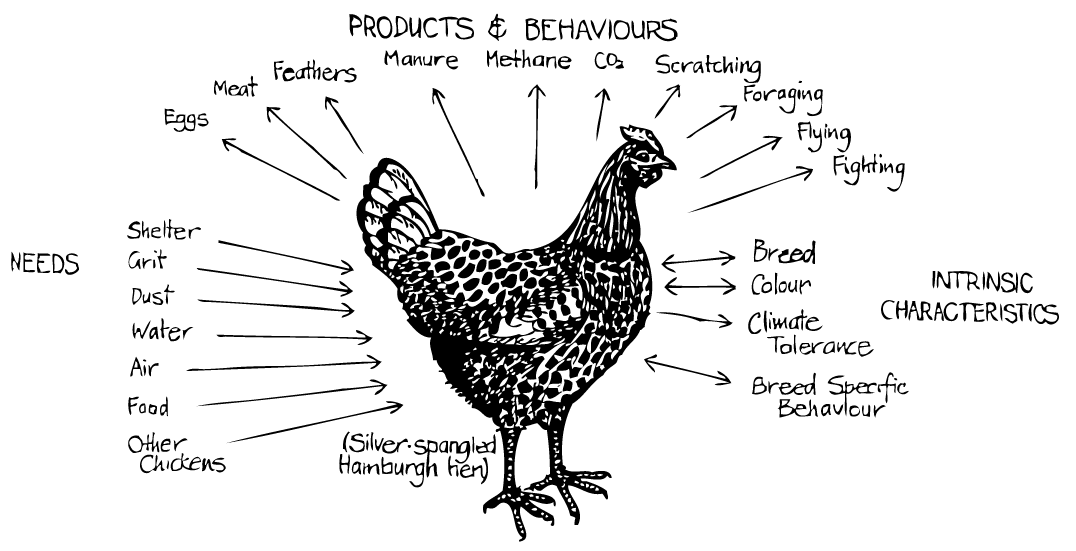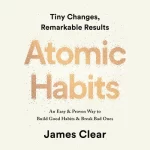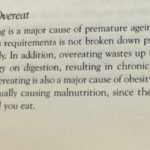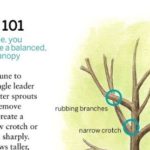Free Permaculture Design Course with Open Permaculture School – Regenerative Leadership Institute – Part 3 Core Concepts
Link to the full course: Part 3 – Core Concepts
Continues from Part 2
(Note: Since a lot of this is already covered in the previous parts I’ll stick to things that stand out or really needs enforcing and embed videos of the more detailed lessons.)
– Now that we’ve gone through the sustainable phase/era, we need to move into the regenerative phase.
– Permaculture aims to re-forest the earth, reclaim and rebuild the soil, grow food where people are, sequester carbon to balance the biosphere, create regenerative culture, catalyze a global grassroots movement, planetary healing, restorative justice, education for self-reliance, and more. Permaculture design is based on ethics and ecological principles.
– Carbon is best in the soil, that’s where it belongs. With the industrial revolution we have been rapidly taking carbon out of the soil – oil and fossil fuels and putting it up into the atmosphere and that is essentially a primary cause for global warming and we need to through various kinds of technologies get that carbon back out of the atmosphere and back into the soil. Biochar, re-foresting, etc. will help sequester the carbon back where it belongs.
Native American principle – The sins of the father are visited on the children of the seventh generation.
– Stacking functions: done by an element which operates more than one function, in real-time or over time. E.g. a pond provides beauty, food, habitat, cooling, etc.

– The problem is the solution. Turning constraints into resources. E.g. seeing waste as a resource. Food waste to compost or using bio-digesters to get gas and compost. Using grey water in the garden.
– Observation is emphasised a lot in a lot of the talks. Use all your senses, observe everything. Before doing anything just observe. Patterns of the sun, where the bees are going. Your body is a finely tuned piece of equipment. Meditate in a way. It’s the oldest form of us synergising and connecting with the planet and environment.
– Look up Kamana Program/Kamana Core: at-home self-study naturalist program.
– Sweet potato make a much better ground cover than grass!
– Sectors are outside energies that flow into your system or into your landscape. Track them, see how to use, harvest or manage them. E.g. Water, pollution, animals, parking & people sector, noise sector. A wall could be a strategy to deal with people or wind sectors.
– SADI acronym – Survey, Analyze, Design, Implement. Or SADIMET – Measure, evaluate, tweak.
– Use the scale of permanence as a check list to figure out all the variables.

– Keystone species helps define an entire ecosystem. Without its keystone species, the ecosystem would be dramatically different or cease to exist altogether.
– Studies of green building showed that the turnover of the people who worked there dropped by 50%, absenteeism dropped by 15%, productivity goes up. So the savings on your staff is up to 60%. You have a better mood if you can see daylight, your mood changes, you are happier, you don’t get sick as much.
– Geo-exchange is where you do things like a green roof or an earth berm and they often include stacked functions, like your green roof is beautiful, it’s habitat, it can even grow food and it’s filtering water, etc.
– Passive design is highly recommended. E.g. passive solar is where you face your house with glass facing south, the roof shading at such an angle that the Sun will shine in. So it shades you in summer and lets heats in winter. Other elements that you need with the passive solar design is insulation and thermal mass, which is a way of storing the energy.
– Solar reflective index: make things black that you want to warm up and you make things white if you are trying to keep them cool.
– If you are going to do a root cellar with fruits or vegetables you want to remember that a lot of fruits produce ethylene gas and ethylene gas will ripen not only fruits but vegetables.
– Niche analysis: A niche is a role a living thing places in the environment. Below is an example of a niche analysis for chickens. Things like inputs, outputs, characteristics, behaviours.

– Talks about different techniques to design, implement, hold meetings, etc. E.g. S.W.O.T, Random Assembly, Ian McHarg Exclusion Principle, Mind Mapping, Delegating responsibilities when collaborating or in a meeting.
– Bird language: You don’t have to know every bird name. Observe what they’re doing and staying to each other. See the patterns and soon you’ll be able to tell when they know a cat is near or something is happening. Few languages to recognise.
1 – Singing (usually marking it’s territory).
2 – Companion call (peaceful and rhythmic between each other).
3 – Fledgling call (feed me! feed me!).
4 – Territorial aggression call/territorial aggression behaviour.
5 – Alarm! So the first 4 are baseline calls which can be differentiated from the alarm as the alarm call is usually silence. Sometimes a noise with an edge to it.
Native American Story of The Peacemaker
– Havana is the only place that produces more than 50% of it’s own food. They practice things like locals having their own small backyard organic pig lots.
– The best part of sheet mulching is that the weeds it’s suppresses will turn into black gold. So weeds are good pioneer plants and very nutritious and they’re pulling all the good stuff out of the soil. Why would you want to throw out the good stuff it’s pulled. Cover it with cardboard and that’s like how animals trample on grass. Bare soil is covered, weeds build the soil. All good news!
– Raised beds gets dehydrated quicker by wind so think of location.
– There are just so many design solutions I can’t even keep track of. Hugel beds, mulch basins, swales, french drains, banana circles, check dams, Bill Mollison‘s design on step pumps where a step if stepped on would pump out energy and Max Meyers talks about how you can use that same principle in parking areas where every car passing the step would pump water back up to the roof reservoir.

– 5 S’s of Water – Slow it, spread it, sink it, store it, share it.
– Aquaphonics is all about the nitrogen cycle and that is all about bacteria or nitrogen fixing bacteria.
– A well made compost tea will fix a lot of soil issues.
– Goes into ameoba, flagellate, microbiology, microbes, fungi, protozoa, nematodes … all the little things that make a great system. Good soil has bacteria so even if it is clumped it will get fixed. Fungi grow snares for the nematodes to eat them.
– Apparently if your worm castings are good you can brush your teeth with them.
– A percolation test/perc test determines the water absorption rate of soil.
– Practical video (50minutes) on Greywater
– Grey water practical installation Part 1
– Grey water practical installation Part 2
– Grey water practical installation Part 3
Aquaponics quick notes:
– Aquaculture with hydroponic food production.
– It can be any scale.
– Feed, water and energy are needed as outside inputs.
– Nitrogen cycle: Fish excrete ammonia, the nitrites are converted into nitrates. The nitrobacter bacteria converts it from nitrites to nitrates. Nitrate taken up by the plants and then clean water back to the fish. Plants are providing everything that the fish needs in the form of food and clean water. If the fish was vegetarian you just feed the fish part of the crop harvested and you have a close system.
– A good aquaponic system will use 70% less water than farming with 10 times more yield. Way less labor.
– No tilling, weeding, reduces pests, requires no soil.
– 5 pounds of fish have to die to get 1 pound of salmon.
– Tuna clean the ocean and store the crap in their fat and we like fat fish so guess what we’re eating.
– Flaxseed evolved not to be eaten so it doesn’t break down enough for us to have it directly. Animals break it down better for us. So 10-50 times more availability through fish.
– Goes into Aeroponics which is way better than the flood and drain aquaponics system. Nutrient film technique is another one. There are vertical systems, mobile systems, all sorts!
– Aquaponic raft system is the best as there is way way way less labor, diseases and pathogens greatly reduced. Tiger prawns used to keep the roots clean.
– Tilapia are full of hormones.
– Every $1 invested in work site health promotion saves $4 in medical costs, $5 in absenteeism, $6 in medical cost absenteeism and workers compensation.
– Just because someone says sustainable does not mean it’s fully sustainable. Just because part of it is sustainable doesn’t mean it’s sustainable.
Part 3 – Core Concepts
– Fundamentals 01
– Principles 01
– Patterns
– Climate
– Design
– Demonstration Site Tour
– Design
– Bird Songs
– Native American Story
– Climate
– Climate + Zones
– Shelter + Climate
– Design + Soils
– Water + Design
– Design
– Water
– Greywater
– Aquaponics
– Max Meyers Interview
– Greywater
– Urban Sustainability
– Kevin Danaher Interview
– Project Presentation
– Social Permaculture
– Organic Farm Tour
Other courses which require purchase
– Greener Home
– Aquaponics
– Building a Green Property
– Chickens
– Permaculture Basics
– Maximum Gardening
– Prolonging the Harvest
– Mindfulness and Meditation
– Working with wildlife
– Regenerative Ecological Design
– Communication
– Companion, Guild and Succession Planting
– 60 Days to a Healthier Life
– Compost: The essential guide
– Graywater Reuse
– Mediation Fundamentals
– Mulch: A Permaculture Marvel
– Rainwater Catchment
– Soil and Garden Beds
– Suburban Permaculture Course
– Water Earthworks



